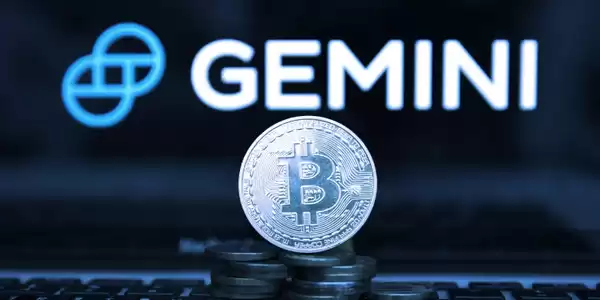-
 bitcoin
bitcoin $123963.239194 USD
1.37% -
 ethereum
ethereum $4529.082464 USD
1.07% -
 xrp
xrp $2.983640 USD
0.71% -
 tether
tether $1.000287 USD
0.02% -
 bnb
bnb $1179.874393 USD
2.99% -
 solana
solana $230.633678 USD
1.55% -
 usd-coin
usd-coin $0.999835 USD
0.03% -
 dogecoin
dogecoin $0.254240 USD
1.34% -
 tron
tron $0.341176 USD
0.15% -
 cardano
cardano $0.842285 USD
0.52% -
 hyperliquid
hyperliquid $48.537896 USD
-0.86% -
 chainlink
chainlink $21.863092 USD
-0.84% -
 ethena-usde
ethena-usde $0.999743 USD
-0.07% -
 sui
sui $3.579561 USD
-0.18% -
 stellar
stellar $0.403418 USD
2.67%
How to make money from Gemini contract trading
By utilizing risk management techniques like stop-loss orders, take-profit orders, and hedging, traders can safeguard their profits while navigating the volatile cryptocurrency markets on Gemini's contract trading platform.
Nov 19, 2024 at 09:14 pm

The first step to making money from Gemini contract trading is to choose a trading strategy. There are many different trading strategies that you can use, so it's important to find one that suits your risk tolerance and trading style.
Some of the most popular trading strategies include:
- Scalping: Scalping is a short-term trading strategy that involves making small profits on frequent price movements. Scalpers typically hold positions for only a few minutes or seconds.
- Day trading: Day trading is a short-term trading strategy that involves buying and selling positions within the same trading day. Day traders typically hold positions for a few hours or less.
- Swing trading: Swing trading is a medium-term trading strategy that involves holding positions for several days or weeks. Swing traders typically look for trends in the market and trade in the direction of the trend.
- Position trading: Position trading is a long-term trading strategy that involves holding positions for several months or even years. Position traders typically look for major trends in the market and trade in the direction of the trend.
Once you've chosen a trading strategy, you need to learn how to use Gemini's trading platform. Gemini's trading platform is designed to be user-friendly, but it can take some time to get used to all of the features.
To learn how to use Gemini's trading platform, you can:
- Read the Gemini Help Center. The Gemini Help Center contains a wealth of information on how to use Gemini's trading platform.
- Watch Gemini's video tutorials. Gemini has a number of video tutorials that can help you learn how to use its trading platform.
- Talk to a Gemini customer support representative. Gemini's customer support representatives are available 24/7 to help you with any questions you may have.
Once you've learned how to use Gemini's trading platform, you need to fund your account. You can fund your account by:
- Depositing cryptocurrency. You can deposit cryptocurrency into your Gemini account from another cryptocurrency wallet or exchange.
- Depositing fiat currency. You can deposit fiat currency into your Gemini account from a bank account or credit card.
Once you've funded your account, you can place a trade. To place a trade, you need to:
- Select the cryptocurrency that you want to trade.
- Choose the type of order that you want to place.
- Enter the amount of cryptocurrency that you want to buy or sell.
- Click the "Place Order" button.
Once you've placed a trade, it's important to manage your risk. There are a number of different ways to manage your risk, such as:
- Using a stop-loss order. A stop-loss order is an order that automatically sells your cryptocurrency if the price falls below a certain level.
- Using a take-profit order. A take-profit order is an order that automatically sells your cryptocurrency if the price rises above a certain level.
- Hedging your positions. Hedging your positions involves taking opposite positions in different cryptocurrencies. This can help to reduce your overall risk.
Once you've made a profit, you can withdraw your profits from Gemini. To withdraw your profits, you need to:
- Click on the "Withdraw" button.
- Enter the amount of cryptocurrency that you want to withdraw.
- Select the cryptocurrency that you want to withdraw.
- Click the "Withdraw" button.
Disclaimer:info@kdj.com
The information provided is not trading advice. kdj.com does not assume any responsibility for any investments made based on the information provided in this article. Cryptocurrencies are highly volatile and it is highly recommended that you invest with caution after thorough research!
If you believe that the content used on this website infringes your copyright, please contact us immediately (info@kdj.com) and we will delete it promptly.
- BlockDAG, DOGE, HYPE Sponsorship: Crypto Trends Shaping 2025
- 2025-10-01 00:25:13
- Deutsche Börse and Circle: A StableCoin Adoption Powerhouse in Europe
- 2025-10-01 00:25:13
- BlockDAG's Presale Buzz: Is It the Crypto to Watch in October 2025?
- 2025-10-01 00:30:13
- Bitcoin, Crypto, and IQ: When Genius Meets Digital Gold?
- 2025-10-01 00:30:13
- Stablecoins, American Innovation, and Wallet Tokens: The Next Frontier
- 2025-10-01 00:35:12
- NBU, Coins, and Crypto in Ukraine: A New Yorker's Take
- 2025-10-01 00:45:14
Related knowledge

Practical parameter settings for a Bitcoin multi-timeframe moving average system
Sep 18,2025 at 10:54pm
Optimizing Timeframe Combinations for Bitcoin Trading1. Selecting appropriate timeframes is crucial when building a multi-timeframe moving average sys...

How can I filter out false breakouts in Dogecoin high-frequency trading?
Sep 22,2025 at 01:00am
Understanding False Breakouts in Dogecoin Trading1. A false breakout occurs when Dogecoin's price appears to move beyond a defined support or resistan...

Techniques for identifying tops and bottoms in the Bitcoin on-chain NVT model
Sep 20,2025 at 07:54pm
Understanding the NVT Model in Bitcoin Analysis1. The Network Value to Transactions (NVT) ratio is often described as the 'P/E ratio' of the cryptocur...

What does the surge in open interest in Bitcoincoin futures mean?
Sep 20,2025 at 11:18pm
Understanding the Surge in Dogecoin Futures Open Interest1. A surge in open interest within Dogecoin futures indicates a growing number of active cont...

How can I use the Ethereum USDT premium to gauge market sentiment?
Sep 18,2025 at 11:55pm
Understanding the Ethereum USDT Premium1. The Ethereum USDT premium refers to the price difference between USDT (Tether) traded on Ethereum-based plat...

What should I do if Ethereum staking yields decline?
Sep 20,2025 at 06:18am
Understanding the Causes Behind Declining Ethereum Staking Yields1. The Ethereum network transitioned to a proof-of-stake consensus mechanism with the...

Practical parameter settings for a Bitcoin multi-timeframe moving average system
Sep 18,2025 at 10:54pm
Optimizing Timeframe Combinations for Bitcoin Trading1. Selecting appropriate timeframes is crucial when building a multi-timeframe moving average sys...

How can I filter out false breakouts in Dogecoin high-frequency trading?
Sep 22,2025 at 01:00am
Understanding False Breakouts in Dogecoin Trading1. A false breakout occurs when Dogecoin's price appears to move beyond a defined support or resistan...

Techniques for identifying tops and bottoms in the Bitcoin on-chain NVT model
Sep 20,2025 at 07:54pm
Understanding the NVT Model in Bitcoin Analysis1. The Network Value to Transactions (NVT) ratio is often described as the 'P/E ratio' of the cryptocur...

What does the surge in open interest in Bitcoincoin futures mean?
Sep 20,2025 at 11:18pm
Understanding the Surge in Dogecoin Futures Open Interest1. A surge in open interest within Dogecoin futures indicates a growing number of active cont...

How can I use the Ethereum USDT premium to gauge market sentiment?
Sep 18,2025 at 11:55pm
Understanding the Ethereum USDT Premium1. The Ethereum USDT premium refers to the price difference between USDT (Tether) traded on Ethereum-based plat...

What should I do if Ethereum staking yields decline?
Sep 20,2025 at 06:18am
Understanding the Causes Behind Declining Ethereum Staking Yields1. The Ethereum network transitioned to a proof-of-stake consensus mechanism with the...
See all articles










































































